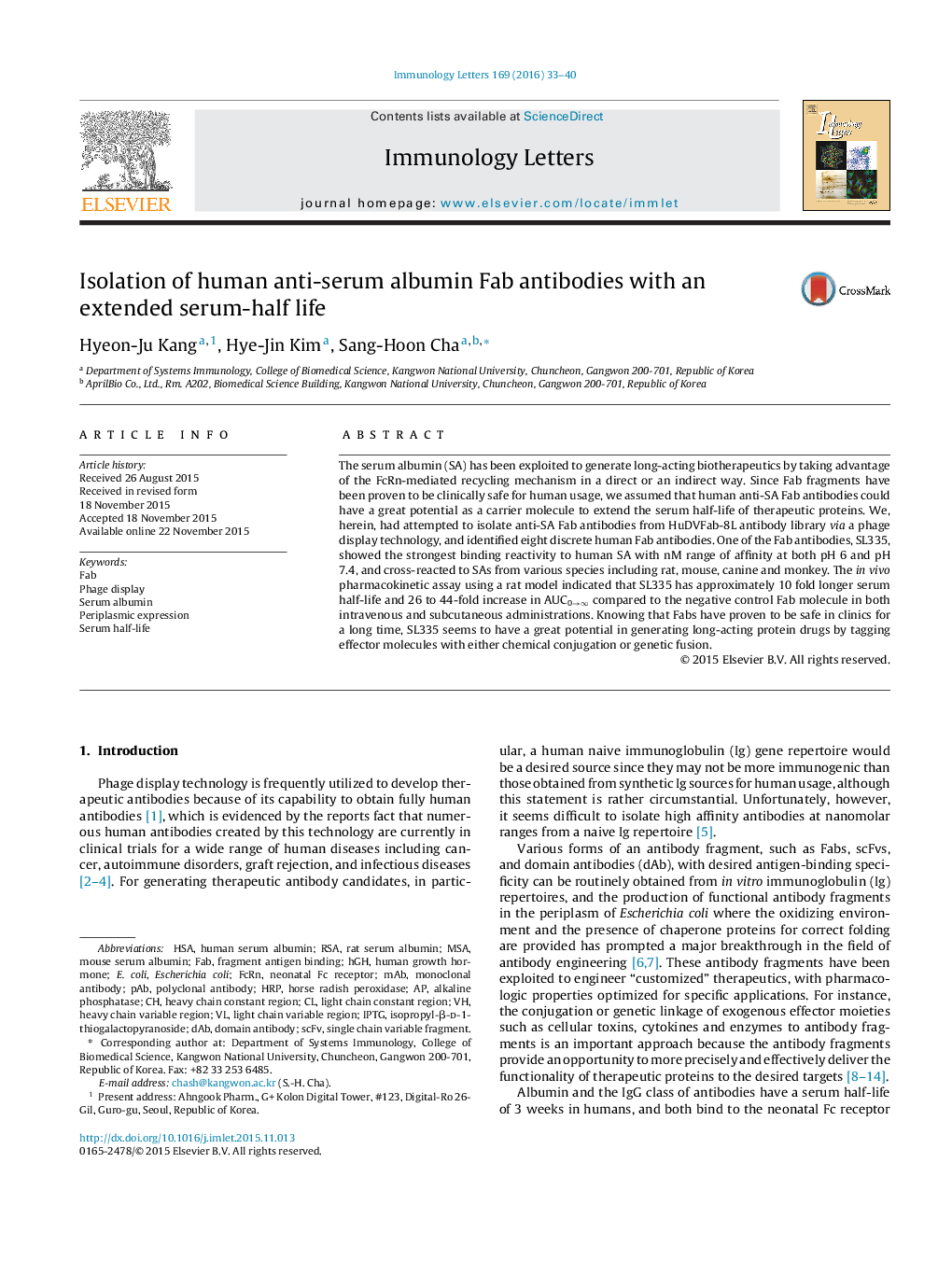| Article ID | Journal | Published Year | Pages | File Type |
|---|---|---|---|---|
| 3355292 | Immunology Letters | 2016 | 8 Pages |
•Human anti-serum albumin Fab antibodies was isolated via phage display technology.•One of Fabs, SL335, is cross-reactive with serum albumins at both pH 6 and pH 7.4.•SL335 showed much longer serum half-life than a negative control human Fab in rats.
The serum albumin (SA) has been exploited to generate long-acting biotherapeutics by taking advantage of the FcRn-mediated recycling mechanism in a direct or an indirect way. Since Fab fragments have been proven to be clinically safe for human usage, we assumed that human anti-SA Fab antibodies could have a great potential as a carrier molecule to extend the serum half-life of therapeutic proteins. We, herein, had attempted to isolate anti-SA Fab antibodies from HuDVFab-8L antibody library via a phage display technology, and identified eight discrete human Fab antibodies. One of the Fab antibodies, SL335, showed the strongest binding reactivity to human SA with nM range of affinity at both pH 6 and pH 7.4, and cross-reacted to SAs from various species including rat, mouse, canine and monkey. The in vivo pharmacokinetic assay using a rat model indicated that SL335 has approximately 10 fold longer serum half-life and 26 to 44-fold increase in AUC0→∞ compared to the negative control Fab molecule in both intravenous and subcutaneous administrations. Knowing that Fabs have proven to be safe in clinics for a long time, SL335 seems to have a great potential in generating long-acting protein drugs by tagging effector molecules with either chemical conjugation or genetic fusion.
